“We are all alienated—but have we ever been otherwise?”
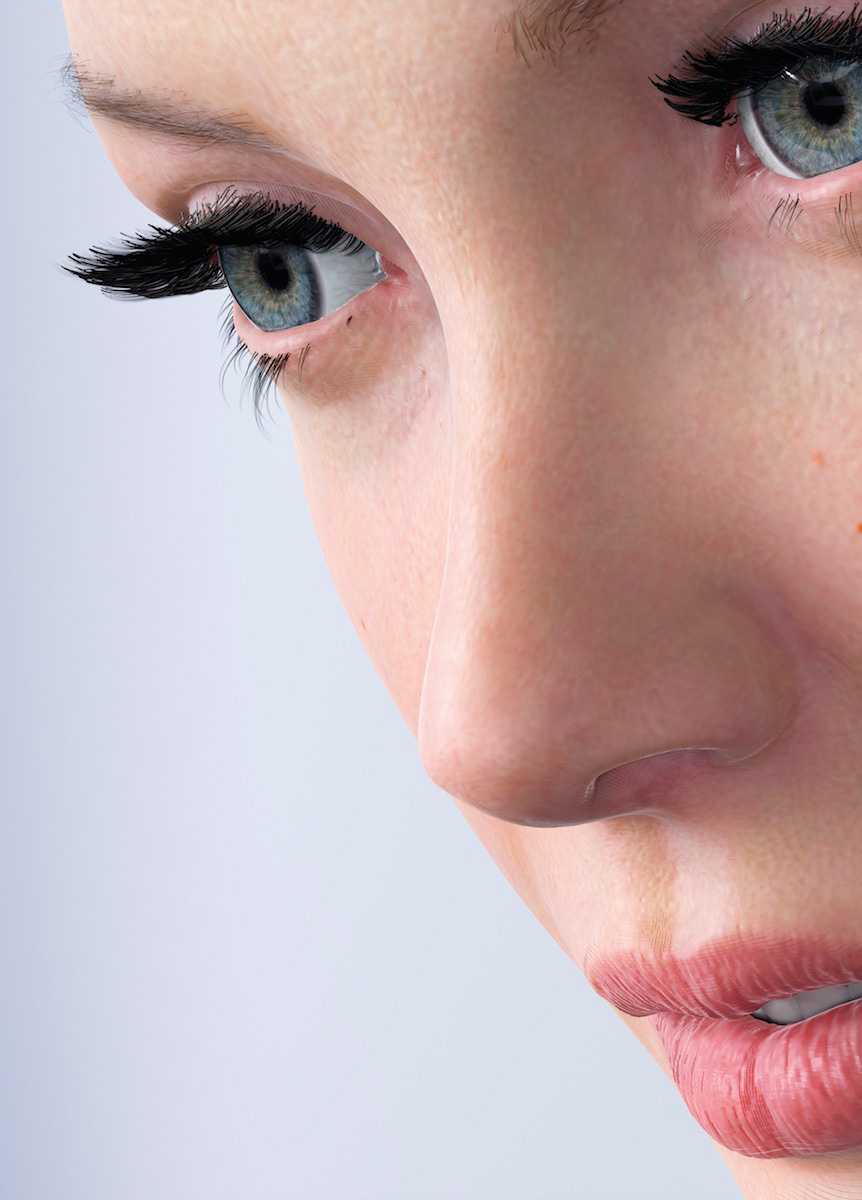
Rigged, 2014
Kate Cooper’s glossy and hyperreal computer-generated images are often understood as critiques of Western beauty ideals, consumer capitalism, and the ways in which these constructs inform the performativity of femininity. In her 2014 show Rigged at the KW Institute of Contemporary Arts in Berlin, the artist showed a woman running in slow motion, while a voice-over reflected on our interactions with billboards and disappearance, happiness and consumption. Those themes and images continue to come back in her work—for instance, in We Need Sanctuary (2016), where a seemingly perfect computer-generated woman struggles with discomfort, lipstick bleeding from her lips. Yet her work doesn’t necessarily demand to be interpreted through the lens of feminist analyses of beauty in a linear way. If critique of Cooper’s work might ask whether advertising images and the discourse of capitalism is actually subverted or co-opted, the answer is not a simple “yes” or “no”. And that might be exactly the point.
In your interview with Metropolis M last year you said some people find your images offensive, reading the glossy and perfect looks of your subjects as a repetition of what we see around us all the time already: on billboards, on television, on timelines and in magazines. How do you relate to such an interpretation of your work?
I’m mostly interested in the way we read things. I myself try to question what a critical reading of a work might be. What is a critical position? What does it look like? How do we experience it? And how do we delineate it with certain aesthetics and politics? Sometimes I think images are too readable. Or it’s too safe in a certain space where you know what it is and what it’s meant to do. I’m trying to question that and make it more complex. If that means that sometimes things are misread, that’s okay. It’s interesting to think who misread it and why.
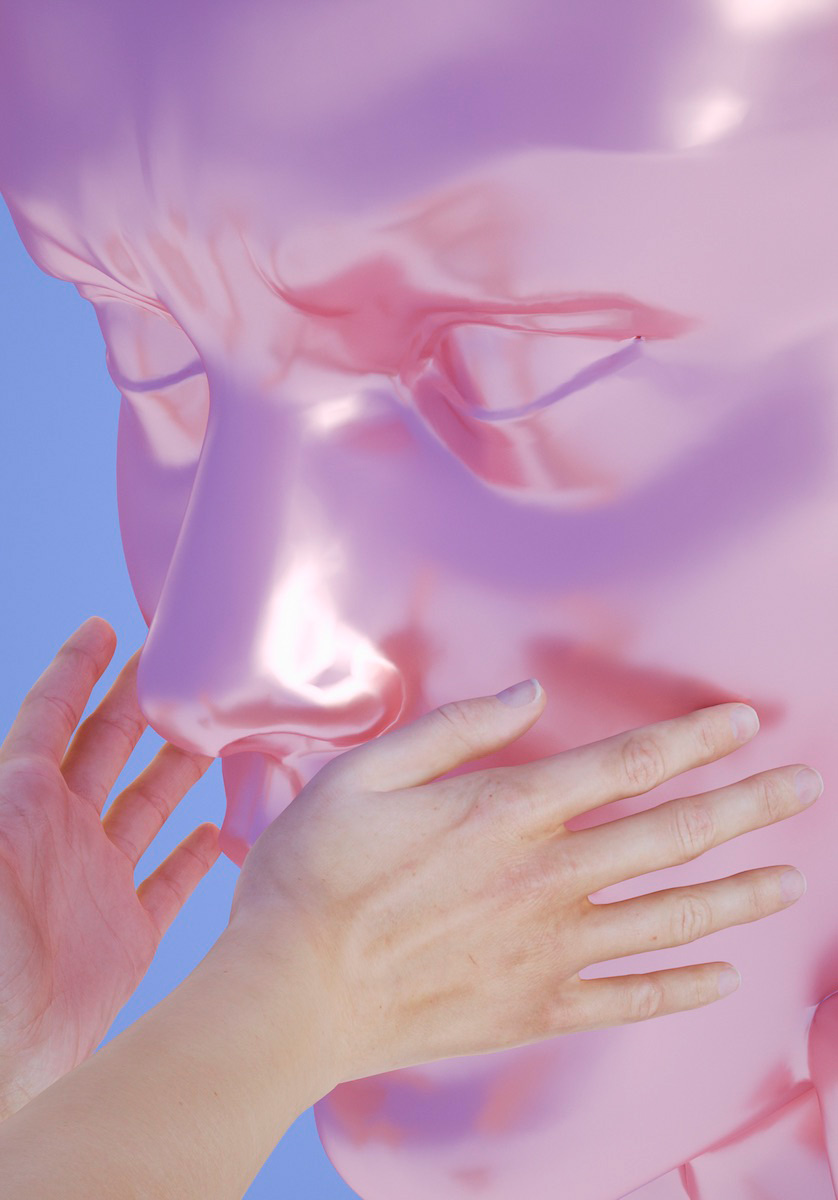
Symptom Machine, 2017

Symptom Machine, 2017
In that context, I wonder about the places people encounter your work. If they see it here in the magazine it doesn’t have the same effect as it does in exhibition spaces, where you also work with moving image, sound, light and much larger installations.
Yes, for sure. Ultimately, I’m engaged with making exhibitions to be experienced in a space. I don’t make work to put it online. You can find me on Instagram, but it’s not the place where it’s best to experience the work. Since my images are taken from the digital realm, it becomes a relocating of these images that you encounter online. I make images and video that you are forced to confront in a very specific physical way. It’s an active engagement. The thing I find most compelling in the material I work with is this dislocation of its intended use. I want to sabotage and exploit the images themselves. What happens with the desire and violence inherent in these bodies when it’s reframed and misused? That’s the thing I really love when you go and see a really good exhibition. This is obviously very rare, because we want very specific things from those exhibitions. For me it’s the experience of a certain scale, with a particular impact and how that might produce an embodied experience with the work itself.
It’s not surprising to find Cooper particularly intrigued with the way her art functions in a space, seeing as she also co-founded Auto Italia South East, an artist-run organization that commissions and produces new work, questioning and developing innovative formats of collaboration between artists. It shows work from collectives and artists such as Metahaven, Hannah Black, Ruth Edwards, Victoria Sinn, Terre Thaemlitz, and an exhibition by AIDS activist art collective Gran Fury. Auto Italia’s practice is specifically significant in the context of the themes Cooper’s work ad-dresses surrounding the machinery of capitalism and women’s productions and performances within that spectrum.
In a cultural industry that thrives on ego and individuality, exclusionary practices in the art world have many guises. One of the ways people are marginalized is through the normalization of unpaid work, from commissions to internships. Auto Italia makes a conscious effort to pay everyone involved, from interns to artists, and to ensure that those who do volunteer their time also have access to paid work.
It might be helpful to read Cooper’s work in conversation with this practice, because the questions that hyperreal feminine beauty pose are not presented to us on neutral platforms or through neutral spaces. In many ways, questioning how the violent imagery or aesthetics of capitalism can be invaded or subverted goes back to Audre Lorde’s statement that The Master’s Tools Will Never Dismantle the Master’s House. In this 1979 essay, Lorde calls out white feminist scholars for failing to invite black women to a conference. She analyses the hypocrisy of a feminist theory that is not met by feminist praxis: paying women of colour and poor women to take care of homes and children while attending these conferences doesn’t create a feminist future everyone can benefit from. This critique of feminist analysis that is not met by everyday practice continues to be relevant in many contexts. In a different context but through a similar friction, meeting theory in praxis is where Cooper’s images really start to come to life.
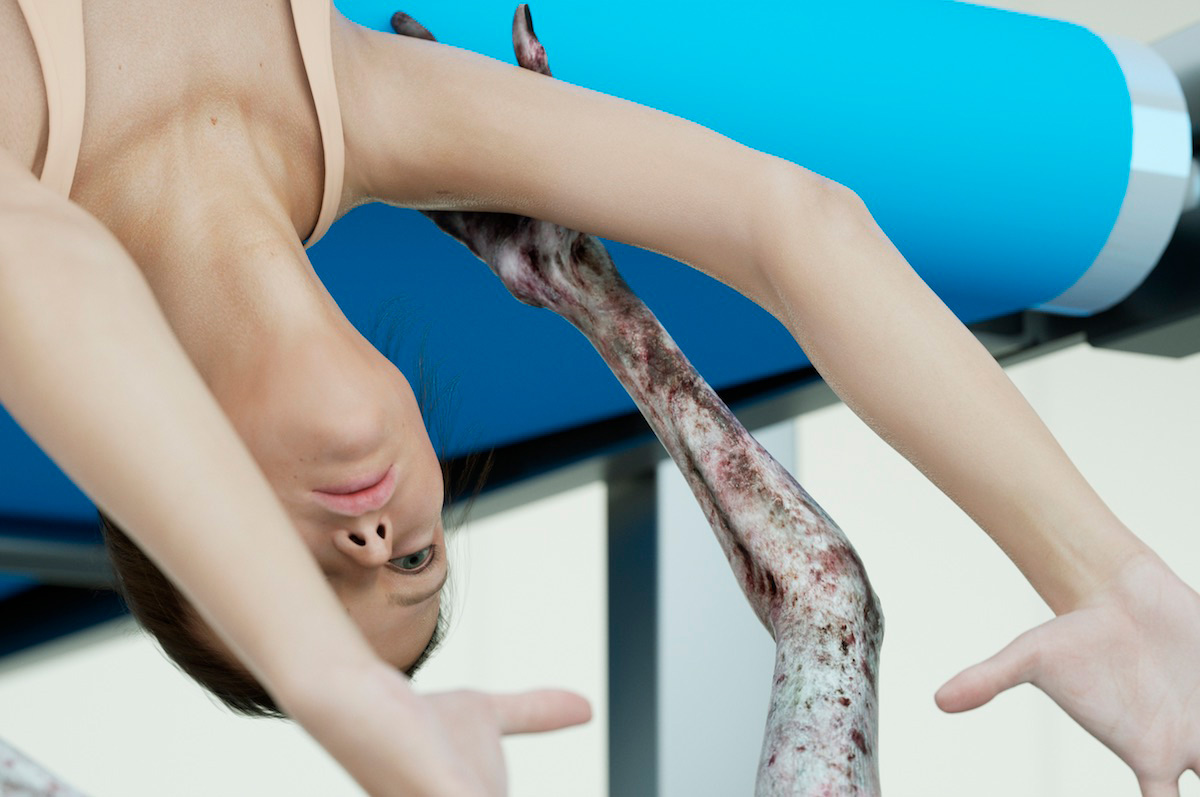
Symptom Machine, 2017
How do you feel about bringing the themes of your art into institutions and spaces that are often male-dominated?
I’d say it’s more nuanced than that. Galleries are not necessarily just male-dominated. There are all kinds of dynamics going into those spaces depending on gender, class and race. Right now there’s definitely also a cliché of the “gallery girl” or “the female producer who does all the work for the genius male star”. I’m interested in what forms of labour we delineate: what is considered male work and what is considered female work? Also, the conversation around class is a huge one and something that’s always at the back of my mind. That’s why I think it’s important to understand what artistic practice is, what it looks like or does, especially collectively so we can understand what these problems are.
Was going to the Rijksakademie a decisive moment for you to consider yourself an artist?
Yes and no. Having the opportunity to have a studio definitely had an influence on my practice, but I think being an artist is much more than that—for example, understanding the conditions in which we are able to practice, the financial means and level of care and support a person might need. Of course, we all want to be creative in a way that we are able to concentrate on this one thing, but for me that’s not a modern way of practicing. I’m always interested in those people who do lots of different projects, things they don’t fully understand or are just curious about. We should challenge the cliché of what we consider an artist to be or what their daily practice could look like. At Rijks everything had a very specific context and that’s interesting to me but it’s also very problematic. By that I mean there wasn’t a structure or room to understand the cultural and political contexts of all the participating artists. And there was this feeling you were performing a very specific identity politics within an international framework. But having said that, I was fortunate to be there with an incredible group of artists and I feel really lucky to have made some long-lasting friendships, which have really challenged my own ideologies and ways of thinking.
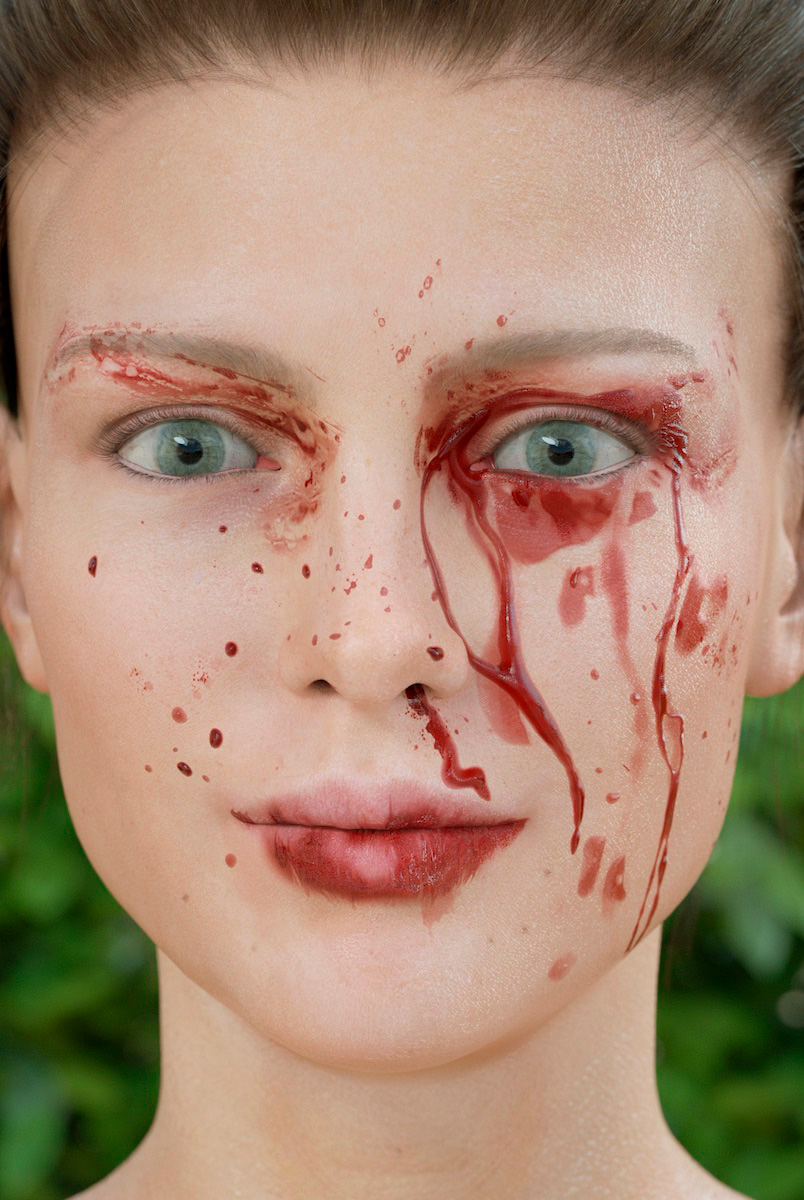
Symptom Machine, 2017
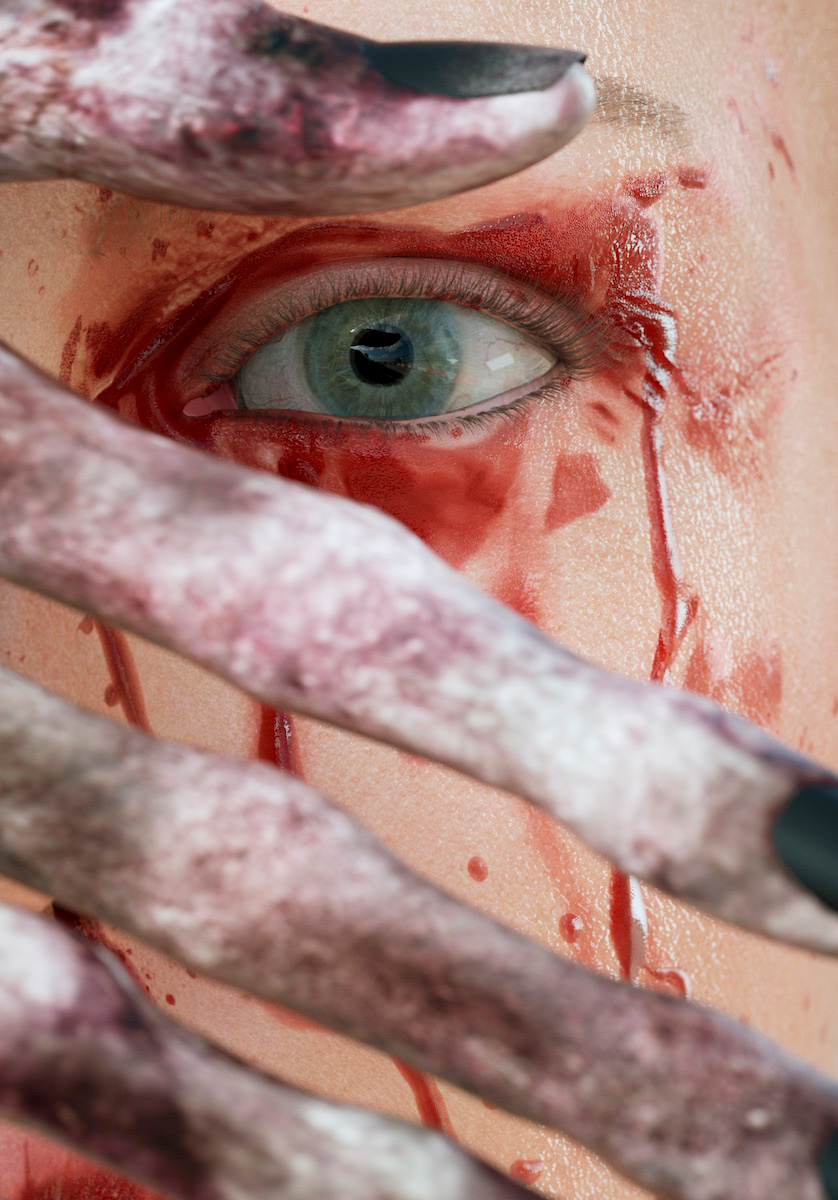
Symptom Machine, 2017
How does your thinking about these positions influence the development of your work?
I mean, for me these questions around labour have really informed my work. The digital bodies I use are made for particular purposes, even if it’s unclear what that might be. For example: are they pulled from the space of advertising, pornography or gaming? I’m transforming them into another space in order to make images. The fact that they aren’t real or “fully human” helps me in turn to think about how we produce more subjective positions. The idea that these computer-generated bodies have to perform mundane things is in contradiction to the intended perfection or “always working” digital manifestation that they are expected to perform. For example, in a recent work, Symptom Machine, the body is fighting against a conveyor belt and a “non-human” cipher. But it’s mainly in a violent struggle with itself: a battered, bloodied body.
The clearest example of Cooper’s exploration of the limits of the body, which permeate her work, is perhaps the introduction of the arms and legs of a new body, one that turns away from what is considered beautiful and stands in sharp contrast to the polished images of white women. The eerie interactions between perfect and imperfect bodies facilitate new layers to her work that engage more explicitly with questions around the limits of beauty.
Whereas her subjects always show a certain struggle against themselves, they’re now faced more directly with infringements of their perfection. With blood or other wounds, they engage with the limits of what our bodies can perform: the struggle against and the perfection that’s implied in every scroll through a timeline. Starting in November, Cooper will show new work in the Freedom of Movement show at the Stedelijk Museum in Amsterdam.
What can we expect from your new work at the Stedelijk?
The Freedom of Movement exhibition is about questions surrounding borders and access in relation to bodies. It explores what degree of agency we might or might not have as citizens. I’m concerned with the body as a site: how it is represented and how that affords access to things. Currently I’m interested in the performativity of disease, how it replicates itself through disguise and how it tries to trick you. Like HIV or cancer. I’m exploring the performativity of disease as a potential blueprint for reimagining strategies of self-care and critique on a molecular level, these interior hidden spaces within which hacking and strategies for survival take place. I’m thinking about how inoculation works: infecting a healthy body with infected cells as a method to produce antibodies. I depart from the replication process of images and how they are used as camouflage, as a way to distract us. I’m interested in the potential of these spaces.
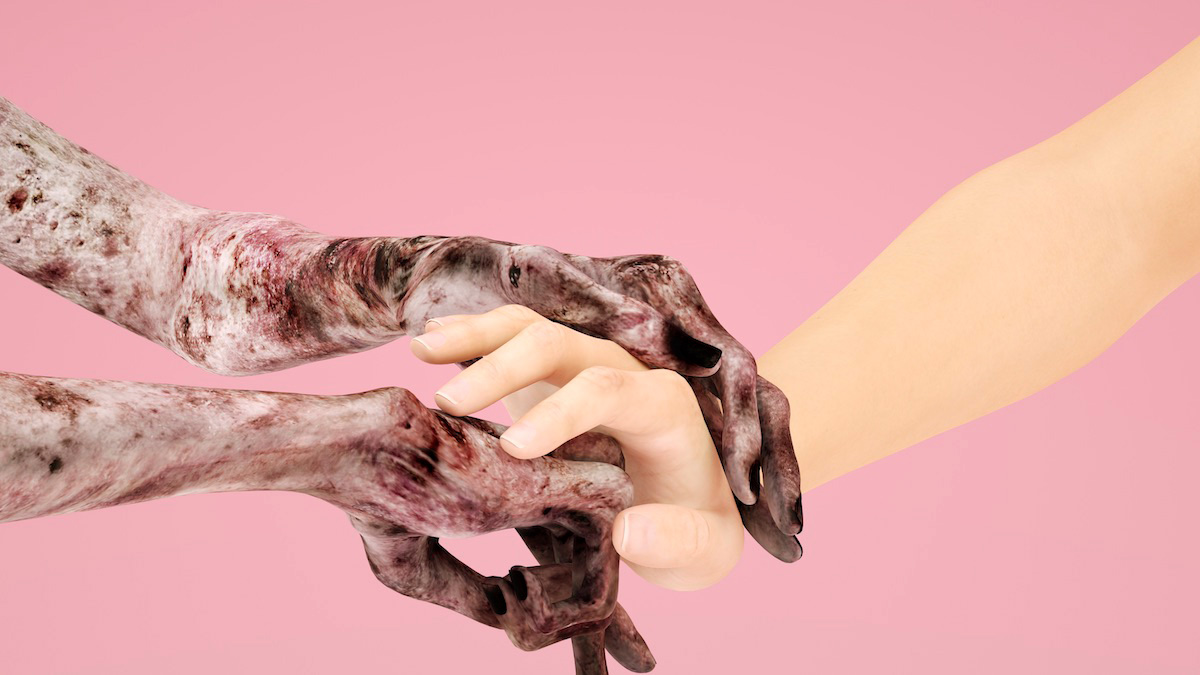
Symptom Machine, 2017
What would be an example of an image that aims to distract?
Well, think of some of the contemporary ways in which propaganda is being put to work. It works as a kind of camouflage. I was listening to an audio piece by artist Beckett Wingwen the other day and one section was about Melania Trump’s coat. The one that said, “I really don’t care, do you?”. We can think of this as a distraction from what is happening on a political level: we just talk about the coat and not the actual crisis of children being separated from their families. Its effect is successful propaganda.
In what ways does that inform your work?
I always begin from the position of the negative image, or of an emptied body. It leads me to wonder about the freedom of the digital body—its imbued agency—to do things that a regular body cannot. On some level, I’m using these films or installations thinking about the ways in which we can use CGI bodies as our refusal to perform. It could be a frame of imagery that suggests, especially in the context of the female body, that we do not always have to perform, or you simply want to refuse that.
Okay, let’s say I don’t always want to smile when guys tell me I should smile more.
Yeah, that makes me so angry. The whole “cheer up” thing. Why do I have to perform for you? I want to push the discussion towards questioning how we’re conditioned to only be able to do certain things or perform in certain ways. We might want to refuse that, and that’s where I start. It could be useful to see images do the things you don’t want to do. I guess it’s like the ability to say no but, from that, produce something new—for me there is always a freedom for creativity in that refusal.
Outsourcing the burden of the performance of femininity sounds like a xenofeminist dream: using technologies’ potential towards a society without gender bias. And in that same tradition, Cooper never really seems to want to place such options in a feminist utopia; rather, she questions if such a utopia is even something we would want to strive for.
While we encounter the limits of both feminist analysis and feminist activism every day, that question is exactly where we return. What is considered utopian and what is considered feasible? Placing realities into the future might put them at risk of remaining there forever: imagined, yet distant. In that case, maybe the most futuristic turn is one towards our past. Like the xenofeminist manifesto questions: “We are all alienated—but have we ever been otherwise?”
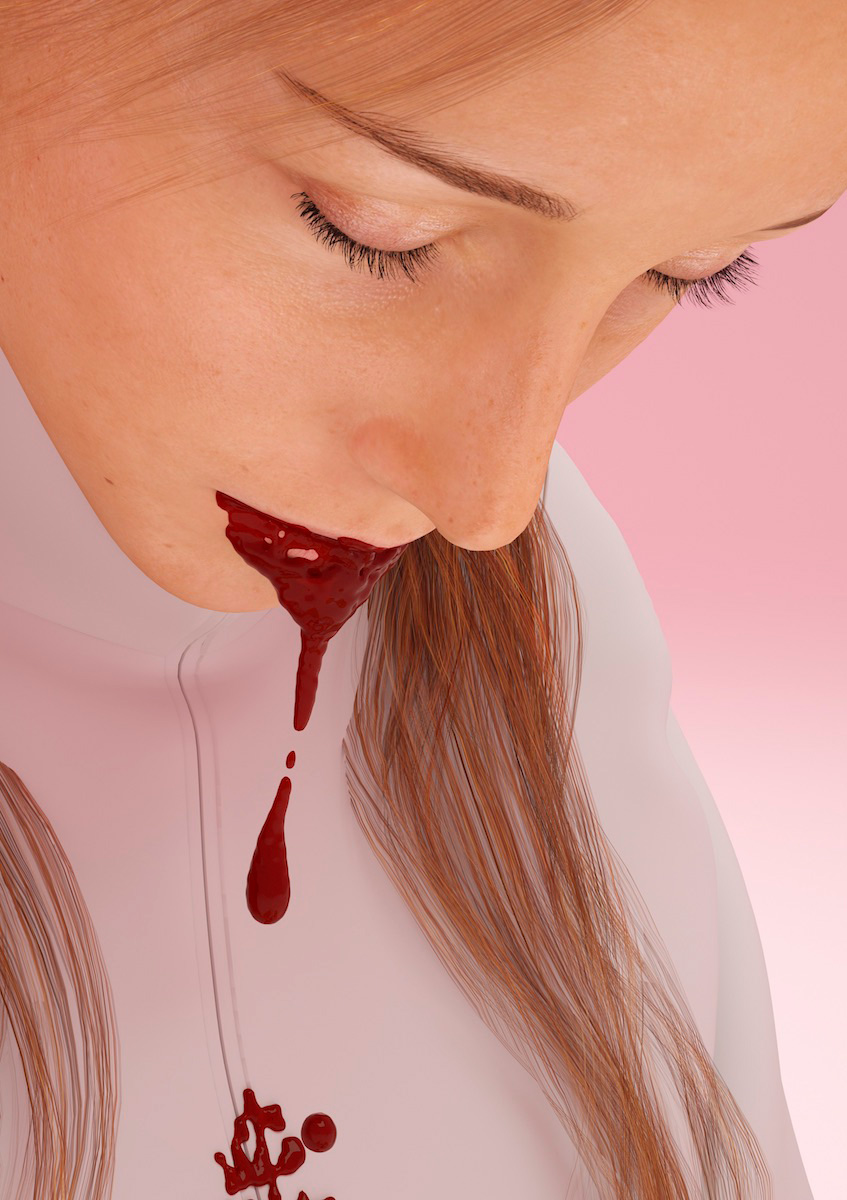
We Need Sanctuary, 2016
Words by Emma van Meyeren
All images courtesy of the artist
Follow Kate Cooper on Instagram